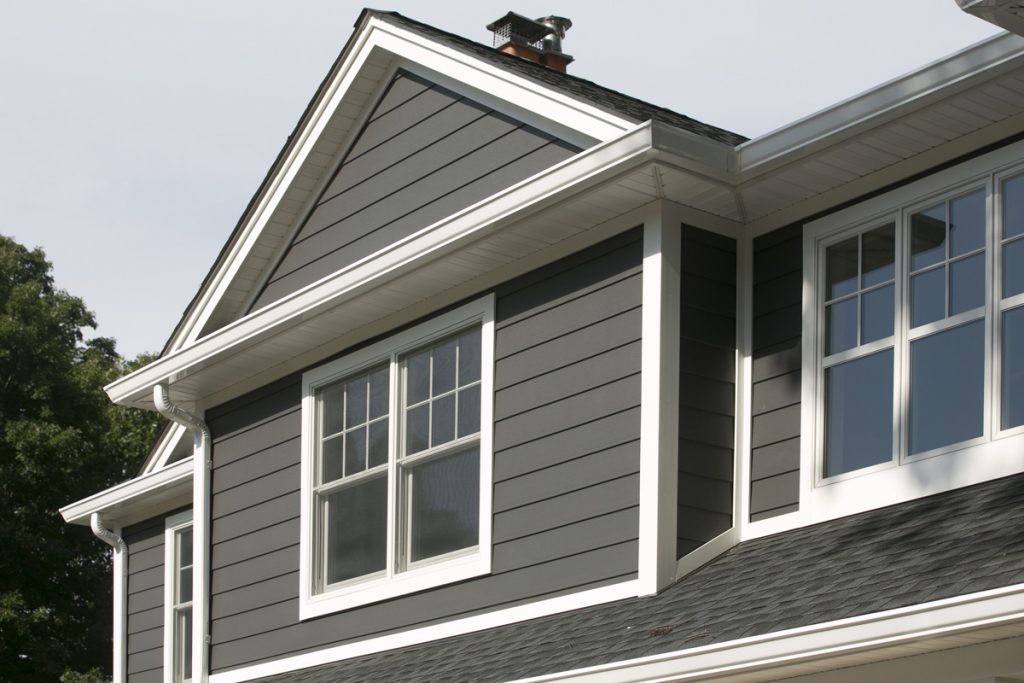Unveiling the Significance of Choosing the Right Outside Sidings for Long-Term Resilience
The resilience of siding products can considerably influence the longevity and total upkeep costs of a property. Comprehending the vital elements that affect the sturdiness of outside house sidings is necessary for making informed choices that can stand the test of time.
Aspects Affecting Siding Resilience
Analyzing the installation process is essential in determining the factors affecting home siding toughness. Correct setup plays a considerable function in guaranteeing the durability and performance of exterior house sidings. Variables such as the usage of high quality materials, experienced labor, and adherence to manufacturer standards during installation are essential for making the most of the resilience of sidings.
The kind of material used for house sidings is a main element affecting their durability. Products like vinyl, fiber wood, concrete, and metal have various degrees of sturdiness and need certain upkeep techniques. Furthermore, direct exposure to environmental elements such as sunshine, moisture, and extreme temperatures can influence the longevity of sidings.
In addition, the quality of installment straight affects the toughness of sidings. Incorrect installment can result in problems like bending, cracking, or water seepage, endangering the structural integrity of the home sidings. Working with seasoned professionals and following appropriate setup treatments are critical steps in guaranteeing the sturdiness of outside sidings.
Effect of Climate Condition
Climate condition considerably affect the efficiency and durability of outside home sidings. Exposure to numerous weather elements such as rainfall, snow, hail storm, UV rays, and fluctuating temperature levels can impact the sturdiness of home sidings gradually. As an example, consistent exposure to moisture from rain or snow can cause water seepage, causing mold, mold, or rot growth in home sidings made from materials like wood or fiber concrete. Extreme sunlight and UV rays can discolor the color and break down the finish of home sidings constructed from plastic or aluminum. Freezing temperature levels complied with by thawing can cause growth and tightening of home sidings, resulting in cracks or bending.
Picking the ideal exterior siding material that can hold up against the certain weather problems of a region is vital for long-lasting resilience. Comprehending the impact of weather condition problems on exterior house sidings is essential in making informed decisions to make certain the longevity and efficiency of the siding financial investment.
Power Efficiency Factors To Consider
Provided the considerable function weather condition conditions play in figuring out the durability of outside house sidings, it is essential to also consider the power performance effects when picking the most appropriate exterior siding material for a home. Opting for energy-efficient siding materials can contribute to keeping a comfy indoor temperature throughout the year while possibly lowering power bills. When deciding on outside home sidings, considering their energy efficiency can lead to lasting price financial savings and a much more environmentally aware option for the home.
Maintenance Costs and needs

In terms of prices, maintenance expenditures can vary extensively depending upon the exterior siding material utilized. Vinyl home siding generally has reduced maintenance expenses compared to wood or fiber concrete exterior siding, as it does not call for regular paint or staining. Nevertheless, it is important to consider long-lasting upkeep expenses when originally choosing a house siding material to make sure that the total lifetime costs house siding installers straighten with your budget. Regular upkeep can help prolong the lifespan of exterior home sidings and stop even more significant issues that may need expensive fixings in the future - siding contractors near me.
Longevity and Return on Investment
Understanding the longevity of different outside house siding products is vital for property proprietors aiming to optimize their return on financial investment. Choosing an exterior siding material with a lengthy life expectancy can substantially impact the overall cost-effectiveness of a property. Plastic home siding, as an example, is known for its durability and reduced maintenance requirements, which can add to long-lasting savings for home owners. Fiber concrete exterior siding is another alternative acknowledged for its long life, with some makers providing service warranties of as much as 50 years. While first installation prices may range siding products, selecting a long lasting option can bring about decreased repair and replacement expenditures gradually.
In regards to roi, home siding products that provide durability can boost the value of a residential property. Potential purchasers are commonly happy to pay more for a home with high-grade, long-lasting exterior siding that needs marginal maintenance. Additionally, choosing a long lasting house siding product can help enhance visual charm, making the building more attractive to prospective purchasers. By thinking about the durability of outside siding materials, home owners can make educated decisions that benefit them over time.
Conclusion

The resilience of house siding materials can significantly affect the longevity and general upkeep costs of a home. Comprehending the influence of weather condition problems on exterior home sidings is important in making educated choices to guarantee the long life and efficiency of the home siding investment.
Offered the significant function weather problems play in determining the sturdiness of exterior sidings, it is vital to likewise consider the power performance ramifications when selecting the most ideal house siding product for a property. Vinyl house siding generally has reduced upkeep expenses compared to wood or fiber cement house siding, as it does not need constant painting or staining. By thoroughly thinking about these variables and picking the best material, residential property owners can optimize the durability and return on financial investment of their outside house siding.